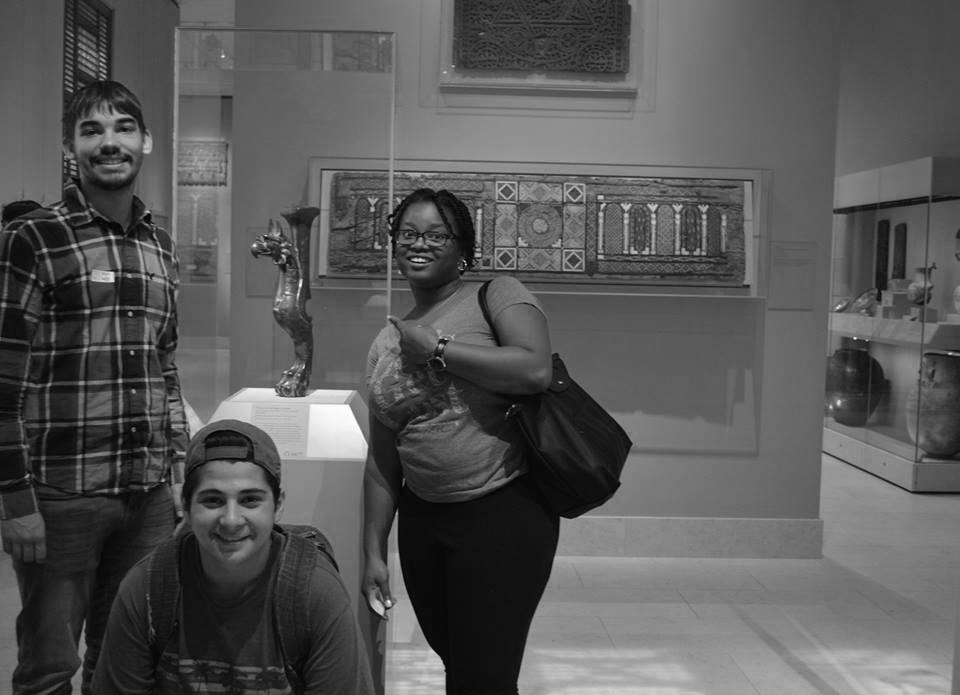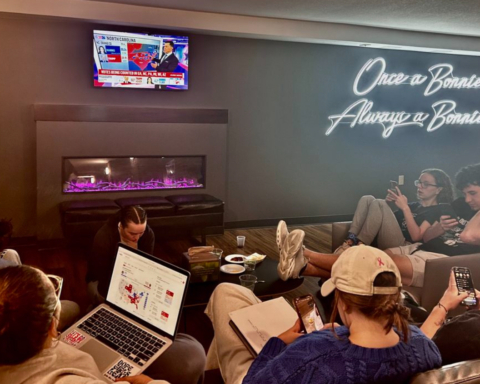Cultural club spreads message of interreligious dialogue
Not every cultural club on campus can grab your attention like Muslim Students and Allies.
Although it previously existed as Muslim Students Association, Co-President Amina Golden-Arabaty, a senior journalism major, took the club under her wing her freshman year and reinvented it into what it is today. The club’s presidency is shared with her brother, Jordan Golden-Arabaty, a junior strategic communications major.
“I started MSA to create a comfortable environment that facilitates interreligious and interfaith dialogue,” Amina Golden-Arabaty said. “I changed the name from association to allies to denounce the dissociation of others and instead welcome everyone.”
MSA meets on Tuesdays at 5:30 p.m. in the new Center for Arab and Islamic Studies (CAIS) on second Plassmann. Fr. Michael Calabria, O.F.M., also director for the CAIS, is the advisor for the club.
The meetings are always different, but the main concept is the same. The club gathers to learn more about what it means to be Muslim and what Islam is truly like.
“We aim to raise awareness and break the stigmas that surround issues like Islamophobia,” Jordan Golden-Arabaty said. “We want to reach more than just the student perspective. This is where partnering with the CAIS on events can allow for community dialogue as well.”
For example, MSA and CAIS host Tea and Sweets on a weekly basis. Additionally, trips to the Cleveland Art Museum in 2016 and the Metropolitan Museum in New York City in 2017 were sponsored events. The upcoming fall trips to the Aga Khan Museum and the Royal Ontario Museum in Toronto will be sponsored by the club as well.
University Ministries provides a van for MSA members to commute to the mosque in Olean on Fridays, and students often volunteer at the Warming House after.
Wear a Hijab Day is an annual event MSA hosts where students are welcomed to wear a hijab for the day to better understand what it’s like to wear head coverings. While some backlash is unavoidable, most students who participated both years could be seen smiling and laughing while learning how to pin a hijab. The positive feedback coincides with MSA’s goal to break down barriers and stigmas.
“It doesn’t necessarily teach people what it’s like to actually be Muslim, but the looks people receive while wearing the hijab can help enlighten students about what it feels like to be a hijabi woman,” said Amina Golden-Arabaty. “Understanding where people come from is the first step to accomplishing our goal.”
MSA has also worked with BonaResponds on restoration of local businesses, where students volunteered to paint the St. Vincent de Paul Society thrift store.
A valuable quality of MSA members is their genuine passion for service and learning. Members look forward to museum trips and volunteer work, rather than doing it because they have to.
By Fraser Breon, Contributing Writer
breonaf18@bonaventure.edu






